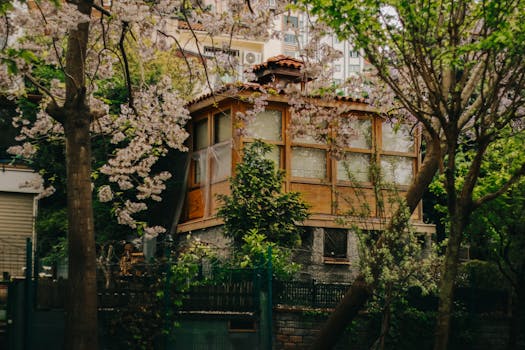
Urban Green Spaces: The Future of Outdoor Living in European Cities by 2025
Introduction to Urban Green Spaces
Urban Green Spaces are becoming increasingly important in European cities as they provide a range of benefits for both the environment and the people living in these cities. Urban Green Spaces are areas of greenery in urban environments, such as parks, gardens, and green roofs, that help to mitigate the effects of urbanization and provide a sustainable future for cities. With the increasing urbanization of European cities, it is essential to prioritize the development and maintenance of these green spaces to ensure a healthy and sustainable environment for future generations.
The Benefits of Urban Green Spaces
The benefits of urban green spaces are numerous and well-documented. Some of the most significant advantages include:
- Improved Air Quality: Urban green spaces help to reduce air pollution by absorbing pollutants and producing oxygen.
- Climate Regulation: Green spaces can help to regulate the climate by providing shade, reducing the urban heat island effect, and absorbing carbon dioxide.
- Increased Biodiversity: Urban green spaces provide habitats for a range of plant and animal species, helping to maintain biodiversity in urban environments.
- Improved Mental Health: Spending time in green spaces has been shown to have a positive impact on mental health, reducing stress and improving mood.
- Increased Physical Activity: Urban green spaces provide opportunities for physical activity, such as walking, cycling, and sports, which can help to improve physical health.
Challenges Facing Urban Green Spaces
Despite the many benefits of urban green spaces, there are several challenges facing their development and maintenance. Some of the most significant challenges include:
- Urbanization and Land Use: The increasing urbanization of European cities means that land is often prioritized for development over green spaces.
- Lack of Funding: Maintaining and developing urban green spaces requires significant funding, which can be difficult to secure.
- Climate Change: Climate change is having a significant impact on urban green spaces, with rising temperatures and changing weather patterns affecting the health and resilience of these areas.
The Future of Urban Green Spaces in European Cities
As we look to the future, it is essential to prioritize the development and maintenance of urban green spaces in European cities. By 2025, we can expect to see a range of innovative solutions and technologies being implemented to support the growth and sustainability of these areas. Some of the most exciting developments include:
- Green Infrastructure: The integration of green spaces into urban infrastructure, such as green roofs, walls, and urban forests.
- Sustainable Urban Planning: The prioritization of green spaces in urban planning, with a focus on creating sustainable and resilient cities.
- Community Engagement: The involvement of local communities in the development and maintenance of urban green spaces, helping to ensure that these areas meet the needs of residents and are well-used and valued.
Conclusion
In conclusion, urban green spaces are a vital component of sustainable and resilient European cities. As we look to the future, it is essential to prioritize the development and maintenance of these areas, using innovative solutions and technologies to support their growth and sustainability. By 2025, we can expect to see a range of exciting developments in urban green spaces, from green infrastructure to community engagement, helping to create a healthier, more sustainable future for European cities.






